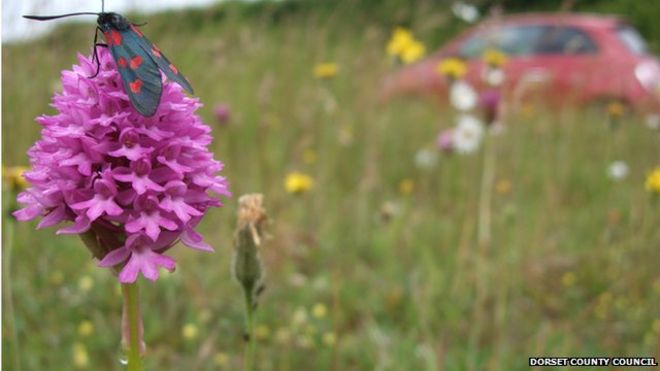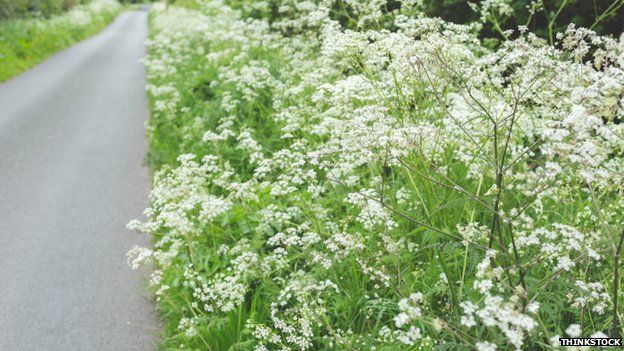More than 700 species of wild plants - almost half of the native flora of the British Isles - are found on road verges, according to a study.

Pyramidal orchid on the roadside
Many plants once found in meadows now only thrive beside roads, where they provide essential habitat for insects, says charity Plantlife International.
But it says one in 10 of the plants is at risk of extinction, in part because councils cut verges too early.
Local authorities say shorter verges are safer for drivers and pedestrians.
Dr Trevor Dines, botanical specialist for the charity, said more than 97% of meadows had been destroyed in England since the 1930s, with road verges becoming the last stretches of natural habitat for wildlife such as bees and other insects.

Road verges can be a haven for wild plants like cow parsley
"Most of our farmland is now hostile to many of our wild plants and other wildlife due to the loss of wild flower meadows and the use of herbicides and fertilisers," he told BBC News.
"The roadside verges are often the last refuge for wild flowers and the wildlife there depends on them.
"It's almost as if plants have been squeezed out of farmland and now they're being squeezed out of road verges from bad management."
The Local Government Association has said keeping road verges well-maintained means motorists have a good line of sight and allows pedestrians to walk more safely alongside busy roads.
Full flower

Around one in ten of these wild plants is threatened with extinction
Plantlife International says road verges are of particular importance to rare plants such as Deptford pink, tower mustard and spiked rampion.
They also act as wildlife corridors and provide pollen and nectar for bees, butterflies and moths.
The wild plant conservation charity says many of Britain's road verges are being cut down in full flower threatening the wildflowers and the wildlife that depends on them.
It is calling on members of the public to sign a petition urging councils to do more to enhance the wildlife value of road verges.
Its management principles for road verges include:
- Allowing plants to complete their full life cycle, ie to grow, flower and set seed
- Removing grass cuttings
- Allowing flowers to return over time as they spread naturally.
Dr Dines added: "If we just give them a chance, wildflowers can return."
From BBC Science/Environment